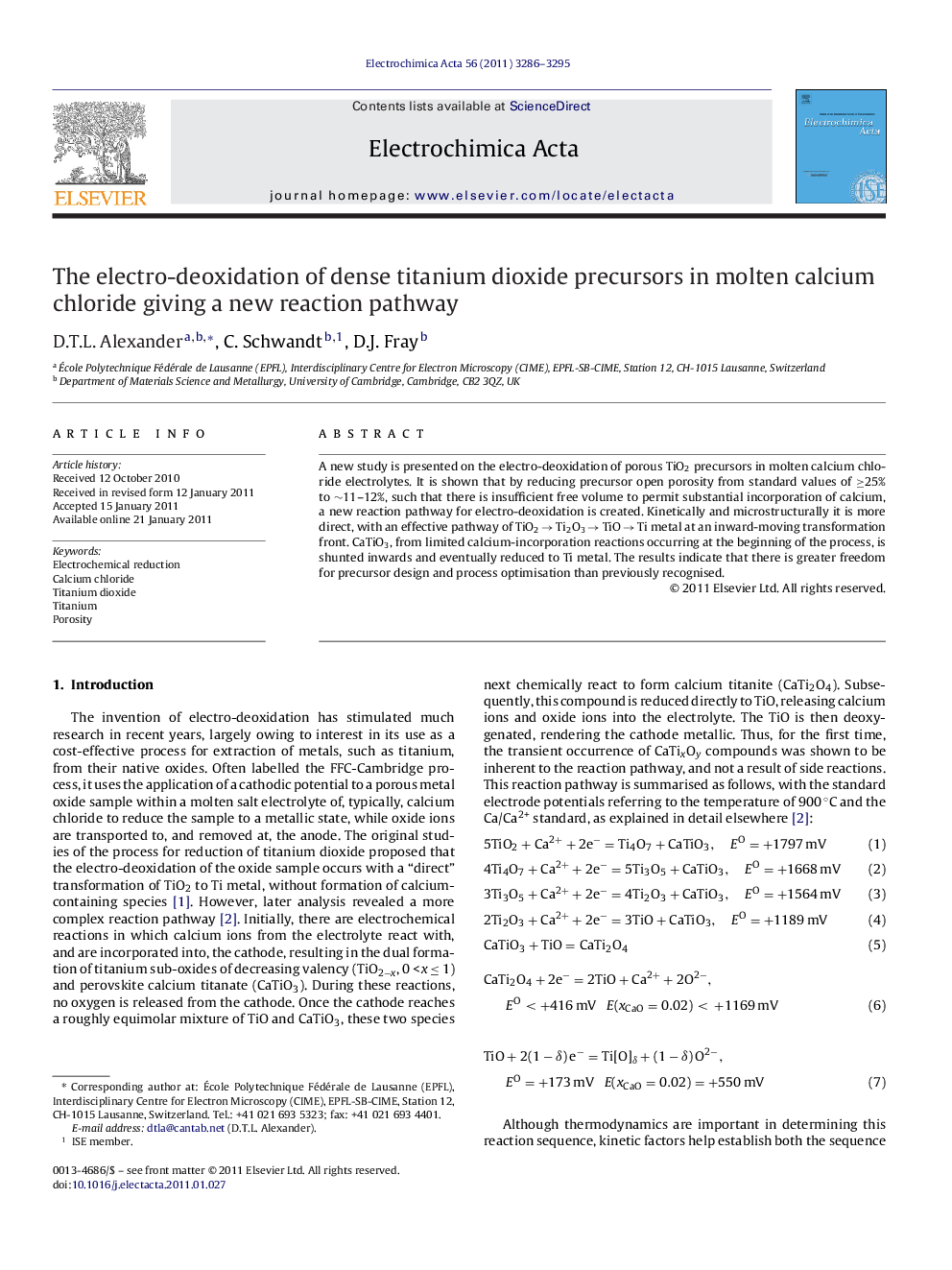| کد مقاله | کد نشریه | سال انتشار | مقاله انگلیسی | نسخه تمام متن |
|---|---|---|---|---|
| 189830 | 459686 | 2011 | 10 صفحه PDF | دانلود رایگان |

A new study is presented on the electro-deoxidation of porous TiO2 precursors in molten calcium chloride electrolytes. It is shown that by reducing precursor open porosity from standard values of ≥25% to ∼11–12%, such that there is insufficient free volume to permit substantial incorporation of calcium, a new reaction pathway for electro-deoxidation is created. Kinetically and microstructurally it is more direct, with an effective pathway of TiO2 → Ti2O3 → TiO → Ti metal at an inward-moving transformation front. CaTiO3, from limited calcium-incorporation reactions occurring at the beginning of the process, is shunted inwards and eventually reduced to Ti metal. The results indicate that there is greater freedom for precursor design and process optimisation than previously recognised.
Research highlights
► Electro-deoxidation of dense TiO2 precursors creates new reaction pathway.
► Insufficient free volume of the precursors blocks calcium incorporation reactions.
► Effective reaction pathway for dense precursors is: TiO2 → Ti2O3 → TiO → Ti metal.
► CaTiO3 from limited calcium-incorporation reactions is also reduced to Ti metal.
Journal: Electrochimica Acta - Volume 56, Issue 9, 30 March 2011, Pages 3286–3295